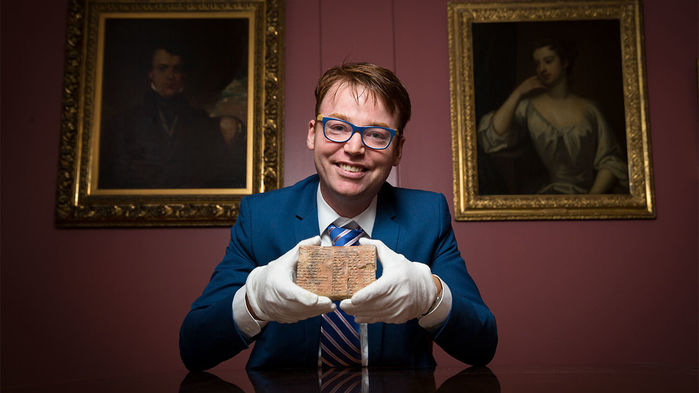An ancient clay tablet proves that in Mesopotamian times of Hammurabi knew trigonometry

Trigonometry , in its classical definition, is a branch of mathematics where trigonometric functions are studied, as well as their use in geometry. The term “trigonometry” appeared in 1565 thanks to the mathematician Bartholomeus Pitiskus, whose book was called “Trigonometry”. The basics of trigonometry were used not only in the Middle Ages, this science was also known to ancient scientists who carried out complex calculations in astronomy, architecture, geodesy, etc.
It was believed that scientists of ancient Greece began to use trigonometry for various purposes (astronomy, construction). But now there is evidence that the first were the Babylonians, who lived fifteen hundred years before the ancient Greek astronomer Hipparchus. He is considered the father of trigonometry, since he created the first trigonometric tables that have survived to this day.
The civilization of the Tigris and Euphrates is one of the most ancient on Earth. The Babylonians had all the signs of a high civilization - writing (as many as two thousand characters), cities, and quite large ones, and money. Of course, there were crafts, agriculture and architecture, very complex for that time. Mesopotamia was already civilized fifteen hundred years before the founding of Rome.
As far as architecture is concerned, it was here that the Babylonians most likely worked with trigonometry. An indirect proof of this is the clay tablet with the code name Plimpton 322. Edgar Banks discovered it at the very beginning of the 20th century (by the way, the image of Indiana Jones was written from it). It is believed that the tablet was created in 1822–1762 BC. It was then that the rules of Hammurabi in Babylon gave Mesopotamia much.

The plate contains 15 lines of numbers that represent the Pythagorean triples. So call the numbers that satisfy the condition x ^ 2 + y ^ 2 = z ^ 2. According to the Pythagorean theorem, these numbers describe the lengths of the sides of a right triangle.
Previously it was thought that this tablet was used in the school, and the teacher checked the students' answers on it. But this year there was also a more original opinion expressed by scientists Daniel Mansfield and Norman Wildberger from the University of New South Wales in Australia. They believe that the table inscribed on clay was used either for teaching trigonometry (not for schoolchildren, but for “students”), or for solving architectural problems during the creation of various buildings.
As it turned out, the numbers in the table describe a sequence of 15 right-angled triangles, where the slope of the hypotenuse varies from one shape to another. According to the Australians, there were initially 38 figures on the plate. It is likely that the way it is, because the left edge is broken off. By the way, the fact that the plate shows the numbers related to the Pythagorean theorem, scientists found out only in the 1940s.
Unfortunately, the table belongs to sculptors or scholars of antiquity - just a guess. There are no facts that directly indicate that this clay tablet was used by ancient architects or mathematicians. However, the Australians insist that the Babylonians built palaces, temples and canals with the help of this tablet (and possibly many others). It may well be that the same hanging gardens were built with the participation of ancient mathematicians, well versed in trigonometry.
Mathematician historian Christine Proust from the French National Center for Scientific Research in Paris argues that the real purpose of the tablet is unknown. So the question of what it is and what it was used for, remains open. Anyway, this artifact confirms the high level of science and culture in Mesopotamia. This civilization is one of the greatest in history.
Thanks to the other surviving tablets and other artifacts of Babylon, we know that at that time the calculation technique was more perfect than the Egyptian one. The Babylonians knew how to solve quadratic equations, geometric progression, then proportions, arithmetic means, and percentages were used. By the way, several years ago on Geektimes the most interesting article about mathematics in Ancient Babylon was published .
All Articles